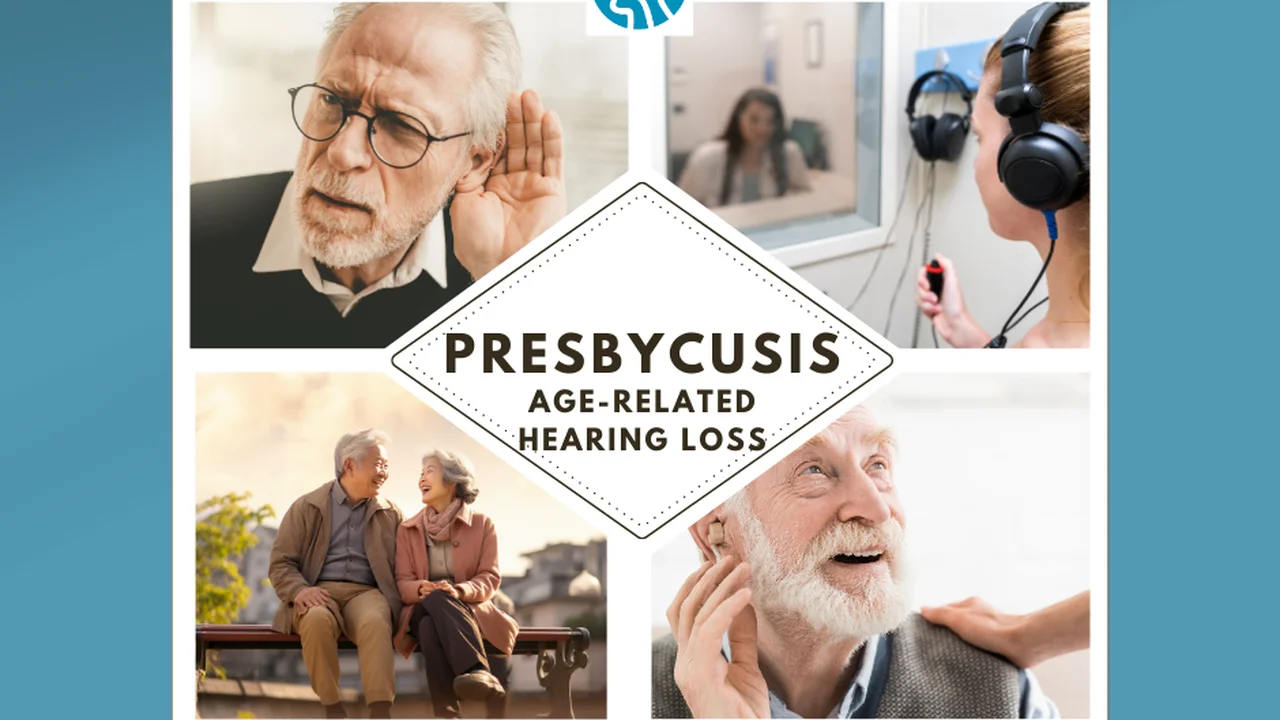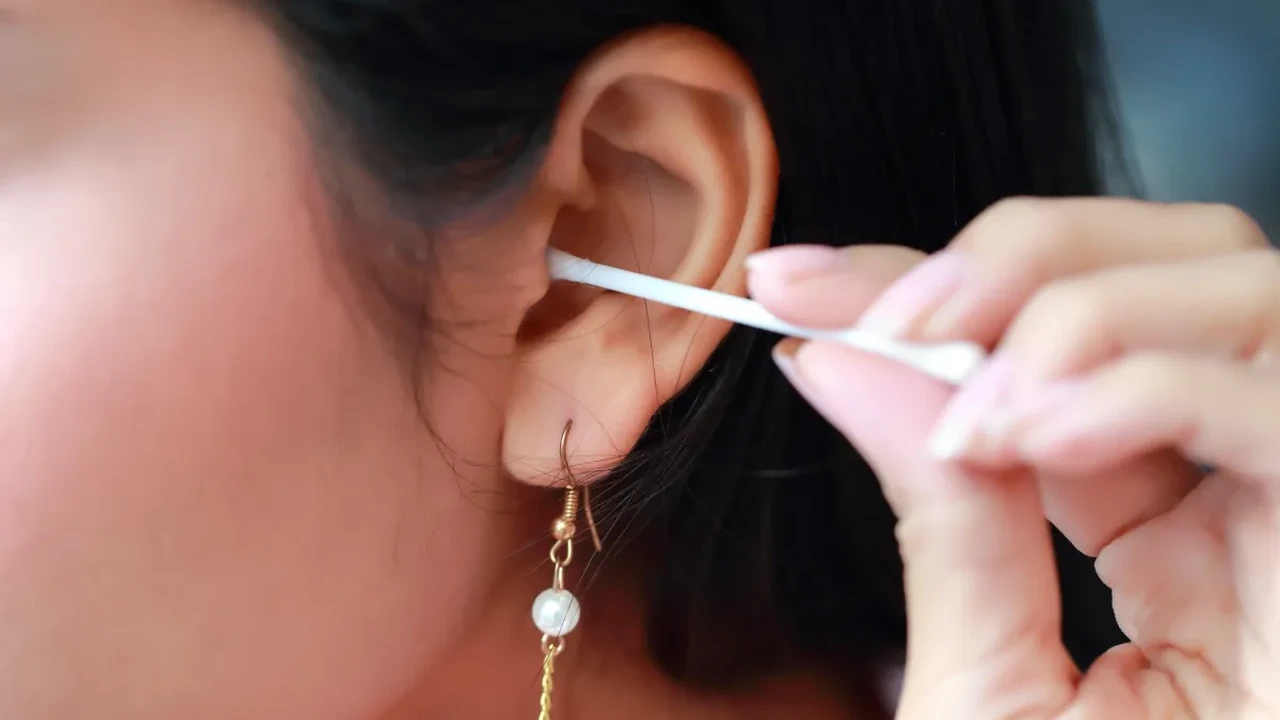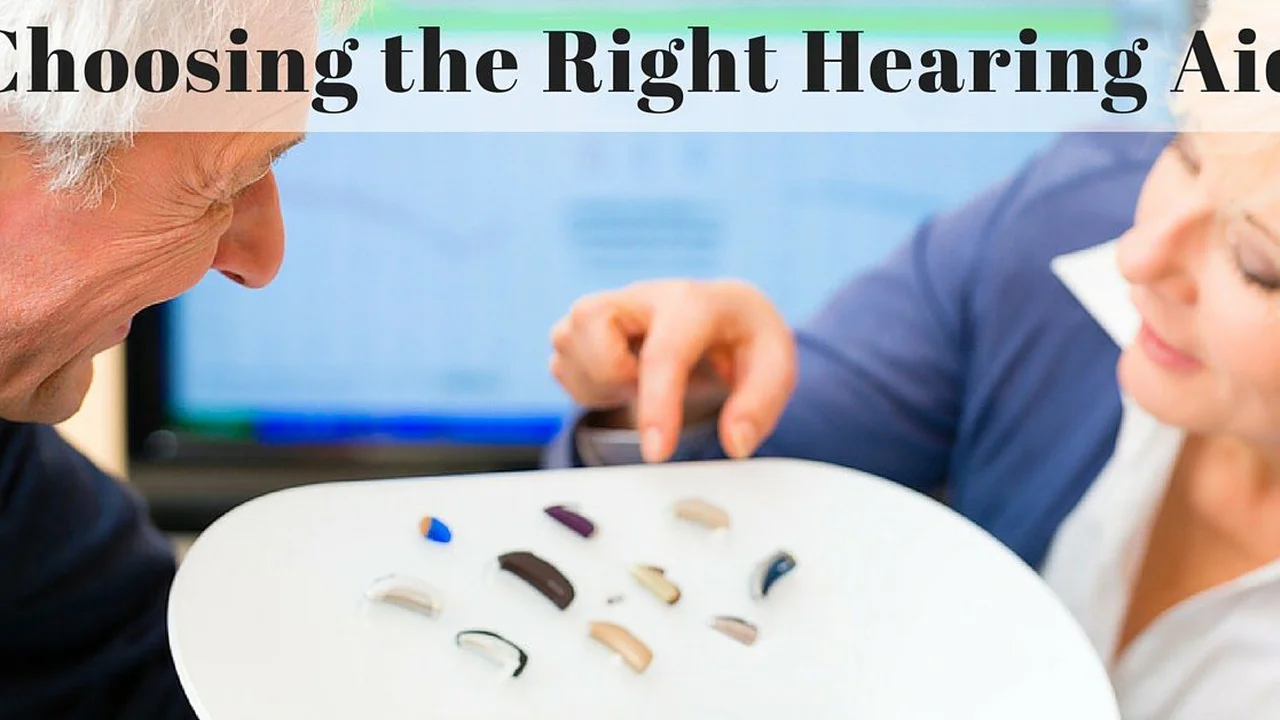Causes of Age Related Hearing Loss Presbycusis
Learn about sudden sensorineural hearing loss (SSNHL). Understand its potential causes, symptoms, and the importance of immediate medical attention.

Sudden Hearing Loss Causes and Emergency Care
Imagine waking up one morning, and the world around you sounds muffled, or perhaps one ear feels completely blocked. You might try to clear your ear, thinking it's just wax or a cold, but the sensation persists. This unsettling experience could be sudden sensorineural hearing loss (SSNHL), a medical emergency that requires immediate attention. Often referred to as 'sudden deafness,' SSNHL is a rapid loss of hearing, usually in one ear, that occurs either all at once or over a few days. It's a condition that can be frightening and confusing, but understanding its causes, recognizing its symptoms, and knowing when to seek emergency care can significantly impact the outcome.
While it might seem like a rare occurrence, SSNHL affects thousands of people each year. The key takeaway here is urgency. The sooner you get medical help, the better your chances of recovering some or all of your hearing. So, let's dive deep into what SSNHL is, what might cause it, how to spot it, and what steps you need to take if you suspect you or someone you know is experiencing it.
What is Sudden Sensorineural Hearing Loss SSNHL Definition
Sudden sensorineural hearing loss (SSNHL) is a rapid decrease in hearing sensitivity, typically affecting one ear, that develops within a 72-hour period. The 'sensorineural' part means the problem lies in the inner ear (cochlea) or the nerve pathways from the inner ear to the brain. This is different from conductive hearing loss, which involves issues with the outer or middle ear preventing sound from reaching the inner ear. SSNHL is often accompanied by other symptoms like tinnitus (ringing in the ear), a feeling of fullness or pressure in the affected ear, and sometimes vertigo or dizziness.
The degree of hearing loss can vary from mild to profound. For a diagnosis of SSNHL, the hearing loss must be at least 30 decibels (dB) in three consecutive frequencies. To put that into perspective, a 30 dB loss means that sounds that were once easily audible now need to be significantly louder to be heard. This can make everyday conversations incredibly difficult and impact your ability to hear environmental sounds like traffic or alarms.
Common Causes of Sudden Hearing Loss Etiology and Risk Factors
The frustrating thing about SSNHL is that in about 90% of cases, the exact cause remains unknown, which doctors refer to as 'idiopathic.' However, researchers have identified several potential causes and risk factors that might contribute to its onset. Understanding these can help shed some light on this mysterious condition.
Viral Infections and SSNHL
One of the most commonly suspected causes of SSNHL is viral infection. Viruses like herpes simplex, influenza, mumps, measles, and even the common cold virus can potentially attack the delicate hair cells in the inner ear or the auditory nerve. This inflammation or damage can lead to a sudden loss of function. It's not uncommon for people to experience SSNHL after a recent viral illness, even if the illness itself was mild.
Vascular Issues and Blood Flow to the Ear
Problems with blood circulation to the inner ear are another significant suspect. The inner ear is highly sensitive to changes in blood flow, and any disruption can quickly lead to damage. Conditions like blood clots, spasms of blood vessels, or even blockages in the tiny arteries supplying the cochlea can starve the hair cells of oxygen and nutrients, resulting in sudden hearing loss. People with underlying cardiovascular conditions, diabetes, or high blood pressure might be at a slightly higher risk.
Autoimmune Diseases and Inner Ear Damage
In some cases, the body's own immune system can mistakenly attack the inner ear, leading to SSNHL. This is known as autoimmune inner ear disease (AIED). Conditions like lupus, rheumatoid arthritis, or Cogan's syndrome can sometimes manifest with sudden hearing loss as a symptom. If you have a history of autoimmune disorders, this is something your doctor will consider.
Neurological Conditions and Auditory Nerve Issues
Less commonly, certain neurological conditions can affect the auditory nerve. For instance, a benign tumor on the auditory nerve called an acoustic neuroma (vestibular schwannoma) can sometimes present with sudden hearing loss, though it's usually a more gradual process. Other neurological events, like a stroke affecting the auditory pathways, can also cause sudden hearing changes.
Trauma and Head Injuries
Physical trauma to the head or ear can also lead to SSNHL. A severe blow to the head, a sudden change in air pressure (barotrauma, like from scuba diving or flying with a severe cold), or even a loud noise exposure (acoustic trauma) can damage the inner ear structures and result in immediate hearing loss.
Other Potential Causes of Sudden Hearing Loss
- Meniere's Disease: While typically characterized by fluctuating hearing loss, vertigo, and tinnitus, Meniere's can sometimes present with a sudden drop in hearing.
- Ototoxic Medications: Certain medications can be toxic to the inner ear and cause hearing loss. While usually dose-dependent and gradual, in rare cases, a sudden onset can occur. Examples include some antibiotics (aminoglycosides), chemotherapy drugs, and high doses of aspirin or NSAIDs.
- Perilymphatic Fistula: This is a tear or defect in the membrane separating the middle ear from the inner ear, allowing inner ear fluid to leak into the middle ear. It can cause sudden hearing loss, dizziness, and tinnitus, often triggered by straining, lifting, or head trauma.
- Genetic Factors: While not a direct cause of sudden onset, some genetic predispositions might make individuals more susceptible to inner ear damage.
Recognizing the Symptoms of Sudden Hearing Loss What to Look For
The primary symptom of SSNHL is, of course, a sudden decrease in hearing. However, it's crucial to recognize the accompanying signs that differentiate it from a simple earwax blockage or a temporary cold-related congestion. Here's what to look out for:
- Sudden Onset: The hearing loss typically occurs very quickly, either all at once (e.g., waking up with it) or over a period of a few hours to three days.
- Unilateral Loss: In most cases, SSNHL affects only one ear. If both ears are affected, it's a much rarer and often more complex situation.
- Muffled Sound or Blocked Ear Sensation: Many people describe it as feeling like their ear is plugged or full, even if they try to clear it. Sounds might seem distant or distorted.
- Tinnitus: A ringing, buzzing, hissing, or roaring sound in the affected ear is a very common accompanying symptom.
- Vertigo or Dizziness: Some individuals may experience a sensation of spinning or unsteadiness, indicating that the balance portion of the inner ear might also be affected.
- Difficulty Understanding Speech: Even if you can hear some sounds, understanding spoken words, especially in noisy environments, becomes significantly harder.
It's important not to dismiss these symptoms. If you experience any of them, especially the sudden onset of hearing loss in one ear, consider it a medical emergency.
Emergency Care for Sudden Hearing Loss Why Time is Critical
This is perhaps the most important section of this entire discussion. If you suspect SSNHL, you need to act fast. Like a stroke or a heart attack, the window for effective treatment is narrow. The general consensus among medical professionals is that treatment should begin as soon as possible, ideally within the first 72 hours (3 days) of symptom onset. The longer you wait, the lower the chances of significant hearing recovery.
Why the Urgency for SSNHL Treatment
The inner ear's delicate hair cells and nerve fibers are highly sensitive to damage. If they are deprived of oxygen or nutrients, or if they are inflamed, they can quickly become irreversibly damaged. Early intervention aims to reduce inflammation, improve blood flow, and protect these vital structures before permanent damage sets in. Think of it like a fire – the sooner you put it out, the less damage it causes.
What to Do Immediately If You Suspect SSNHL
- Do NOT Wait: Do not assume it's just earwax or a temporary issue. Do not wait to see if it gets better on its own.
- Contact Your Doctor or an ENT Specialist: Call your primary care physician or, even better, an Ear, Nose, and Throat (ENT) specialist (otolaryngologist) immediately. Explain your symptoms and emphasize the sudden onset.
- Go to an Urgent Care or Emergency Room: If you cannot get an immediate appointment with an ENT, go to an urgent care clinic or the emergency room. They can perform initial assessments and refer you appropriately.
- Describe Your Symptoms Clearly: Be precise about when the hearing loss started, whether it's in one or both ears, and any other accompanying symptoms like tinnitus or dizziness.
Diagnosis of Sudden Sensorineural Hearing Loss Diagnostic Procedures
When you seek medical attention for suspected SSNHL, a thorough diagnostic process will be initiated to confirm the diagnosis and rule out other conditions. This typically involves:
Comprehensive Hearing Test Audiogram
The cornerstone of diagnosis is a comprehensive audiogram. This test measures your hearing thresholds at various frequencies. For SSNHL, the audiogram will show a sensorineural hearing loss of at least 30 dB in three consecutive frequencies in the affected ear. This confirms the type and degree of hearing loss.
Physical Examination of the Ear
Your doctor will perform a physical examination of your ear canal and eardrum using an otoscope to rule out any obvious blockages like earwax or middle ear infections that could cause conductive hearing loss.
Blood Tests and Lab Work
Blood tests may be ordered to check for underlying conditions such as viral infections, autoimmune diseases, diabetes, or thyroid problems that could be contributing to the hearing loss.
Imaging Studies MRI Scan
An MRI (Magnetic Resonance Imaging) scan of the head, particularly focusing on the internal auditory canal and brain, is often recommended. This is primarily to rule out an acoustic neuroma or other structural abnormalities that could be pressing on the auditory nerve. While acoustic neuromas are rare, it's important to exclude them as a cause.
Treatment Options for Sudden Hearing Loss Medical Interventions
The primary treatment for SSNHL, especially when the cause is idiopathic, is corticosteroids. These powerful anti-inflammatory medications aim to reduce swelling and inflammation in the inner ear, which is thought to be a common underlying mechanism.
Oral Corticosteroids Prednisone
The most common treatment involves a course of oral corticosteroids, such as prednisone. This is usually prescribed for a period of 10-14 days, often with a tapering dose. The goal is to quickly reduce inflammation and give the inner ear a chance to recover. It's crucial to start this treatment as soon as possible after symptom onset.
Intratympanic Steroid Injections
For individuals who cannot take oral steroids (due to medical conditions like diabetes or ulcers), or for those who don't respond to oral steroids, intratympanic steroid injections may be an option. In this procedure, a corticosteroid solution is injected directly into the middle ear, where it can diffuse into the inner ear. This delivers a higher concentration of the drug directly to the affected area with fewer systemic side effects. It can also be used as a salvage therapy if oral steroids don't work.
Hyperbaric Oxygen Therapy HBOT
Hyperbaric oxygen therapy (HBOT) involves breathing pure oxygen in a pressurized chamber. This increases the amount of oxygen dissolved in the blood, which can then reach the inner ear and potentially aid in recovery, especially if the SSNHL is thought to be due to vascular issues or oxygen deprivation. HBOT is often used as an adjunctive therapy, meaning it's used in addition to corticosteroids, and its effectiveness is still being studied, but some research shows promising results.
Other Potential Treatments and Supportive Care
Depending on the suspected cause, other treatments might be considered:
- Antivirals: If a viral infection is strongly suspected, antiviral medications might be prescribed, though their effectiveness in SSNHL is debated.
- Vasodilators: Medications to improve blood flow might be used, though evidence for their efficacy is limited.
- Dietary and Lifestyle Changes: If underlying conditions like diabetes or cardiovascular disease are identified, managing these conditions is crucial for overall health and potentially for preventing future hearing issues.
Prognosis and Recovery After Sudden Hearing Loss What to Expect
The prognosis for SSNHL varies widely among individuals. About one-third to two-thirds of people experience some degree of spontaneous recovery, even without treatment. However, with prompt medical intervention, the chances of recovery significantly improve.
Factors Influencing Recovery from SSNHL
- Time to Treatment: As mentioned, the sooner treatment begins, the better the outcome.
- Severity of Hearing Loss: Individuals with less severe hearing loss at onset tend to have a better prognosis.
- Presence of Vertigo: If vertigo is also present, it can sometimes indicate a poorer prognosis for hearing recovery.
- Age: Younger individuals often have a better chance of recovery than older adults.
- Cause: If an underlying cause is identified and treatable (e.g., an autoimmune condition), addressing that can improve outcomes.
What if Hearing Does Not Fully Recover Hearing Aids and Assistive Devices
Even with prompt treatment, some individuals may not fully recover their hearing. If significant hearing loss persists, various solutions can help manage the condition and improve quality of life.
Hearing Aids for Residual Hearing Loss
If there is residual hearing in the affected ear, a conventional hearing aid can be very beneficial. Modern hearing aids are incredibly sophisticated and can be programmed to amplify specific frequencies where hearing loss is most pronounced. They can significantly improve speech understanding and overall sound awareness.
Recommended Hearing Aid Products for Residual SSNHL:
-
Phonak Audeo Lumity L90-R:
- Description: This is a top-tier Receiver-In-Canal (RIC) hearing aid known for its exceptional sound quality, speech clarity in noise, and robust rechargeable battery. It features Phonak's SmartSpeech Technology and AutoSense OS 5.0, which automatically adapts to different listening environments.
- Use Case: Excellent for individuals with moderate to severe sensorineural hearing loss who want premium features, seamless Bluetooth connectivity to both iOS and Android devices, and a discreet design. Its focus on speech understanding makes it ideal for social situations and work environments.
- Comparison: Offers superior noise reduction and speech enhancement compared to many mid-range models. Its universal Bluetooth connectivity is a significant advantage over some brands that only connect to iOS.
- Estimated Price: $3,000 - $7,000 per aid (depending on provider, services, and location).
-
Oticon More 1 MiniRITE R:
- Description: Oticon More uses a Deep Neural Network (DNN) to process sound, giving the brain more complete sound information. It's a rechargeable RIC device that aims to provide a more natural soundscape rather than just focusing on speech.
- Use Case: Ideal for users who prioritize a rich, open sound experience and want to hear all sounds around them, not just speech. Great for music lovers and those who find traditional noise reduction too aggressive. Connects to iOS and select Android devices.
- Comparison: Its 'MoreSound Intelligence' and DNN approach offer a different philosophy than some competitors, providing a wider sound picture. Rechargeable and discreet.
- Estimated Price: $2,800 - $6,500 per aid.
-
Starkey Genesis AI 24 RIC RT:
- Description: Starkey's latest flagship, the Genesis AI, boasts advanced AI features for personalized sound, health tracking, and fall detection. It's a rechargeable RIC with a sleek design and powerful processing.
- Use Case: Best for tech-savvy users who want cutting-edge features beyond just hearing amplification. Its AI can learn user preferences and optimize sound. Health tracking features appeal to those focused on overall wellness. Connects to iOS and Android.
- Comparison: Stands out with its integrated health tracking and AI capabilities, offering a more holistic approach to hearing health. Excellent for active individuals.
- Estimated Price: $3,200 - $7,500 per aid.
CROS BiCROS Systems for Single-Sided Deafness SSD
If the hearing loss in one ear is profound and there is no usable hearing, a conventional hearing aid won't help. In such cases, a CROS (Contralateral Routing of Signal) or BiCROS (Bilateral Contralateral Routing of Signal) system might be recommended. These systems are specifically designed for single-sided deafness (SSD).
-
CROS System:
- How it Works: A CROS system consists of a microphone placed on the ear with no hearing (the 'deaf' ear) and a receiver on the good ear. The microphone picks up sounds from the deaf side and wirelessly transmits them to the receiver on the good ear. This allows the user to hear sounds originating from their deaf side, improving sound localization and awareness.
- Use Case: For individuals with profound hearing loss in one ear and normal hearing in the other. It helps overcome the 'head shadow effect' where sounds from the deaf side are blocked by the head.
- Recommended Product: Phonak CROS P (compatible with Phonak Paradise hearing aids). This system offers excellent sound quality and seamless integration, allowing for clear transmission of sound from the non-hearing side to the hearing ear.
- Estimated Price: $2,500 - $5,000 for the CROS transmitter and a compatible hearing aid.
-
BiCROS System:
- How it Works: Similar to a CROS system, but used when there is profound hearing loss in one ear and some hearing loss (but not normal hearing) in the other ear. The microphone on the deaf side transmits sound to the better ear, and the device on the better ear also acts as a hearing aid, amplifying sounds for that ear.
- Use Case: For individuals with profound hearing loss in one ear and hearing loss in the other ear. It provides both sound awareness from the deaf side and amplification for the better ear.
- Recommended Product: Oticon CROS PX (compatible with Oticon More or Real hearing aids). This system leverages Oticon's advanced processing to provide a natural sound experience while routing sounds from the non-hearing side.
- Estimated Price: $3,000 - $6,000 for the BiCROS transmitter and a compatible hearing aid.
Bone Anchored Hearing Systems BAHS
For some individuals with SSD, a Bone Anchored Hearing System (BAHS), also known as a Bone Conduction Hearing System, might be an option. These devices bypass the outer and middle ear and transmit sound vibrations directly to the inner ear of the better-hearing side through bone conduction.
- How it Works: A small titanium implant is surgically placed in the bone behind the deaf ear. An external sound processor attaches to this implant (either directly or via a magnetic connection) and picks up sounds. These sounds are converted into vibrations that travel through the skull bone to the cochlea of the good ear.
- Use Case: Primarily for individuals with SSD who cannot use CROS/BiCROS systems or prefer a different solution. It can also be used for conductive or mixed hearing loss where conventional hearing aids are not effective.
- Recommended Products:
- Cochlear Baha 6 Max: Known for its powerful sound processor and discreet design. Offers direct streaming from iOS and Android devices.
- Oticon Medical Ponto 5 Mini: Features Oticon's OpenSound Navigator technology, providing a more open sound experience and good speech understanding in noise.
- Estimated Price: $5,000 - $10,000 per device (includes surgery and device cost, varies widely by region and insurance).
Cochlear Implants for Profound Bilateral Hearing Loss
While SSNHL typically affects one ear, if an individual experiences profound bilateral (both ears) sudden hearing loss, or if the profound unilateral loss is so debilitating that other options aren't sufficient, a cochlear implant might be considered. This is a more invasive surgical option.
- How it Works: A cochlear implant bypasses the damaged parts of the inner ear and directly stimulates the auditory nerve. It consists of an external sound processor and an internal implant surgically placed under the skin behind the ear, with an electrode array inserted into the cochlea.
- Use Case: For individuals with severe to profound sensorineural hearing loss in both ears who receive little to no benefit from conventional hearing aids. In rare cases of profound unilateral SSNHL, it might be considered if other options fail and the impact on quality of life is severe.
- Recommended Products: Leading manufacturers include Cochlear, Advanced Bionics, and MED-EL. Each offers various sound processors with different features and connectivity options.
- Estimated Price: $30,000 - $50,000 per ear (includes surgery, device, and rehabilitation, often covered by insurance).
Preventing Sudden Hearing Loss Proactive Measures
While many cases of SSNHL are idiopathic and thus difficult to prevent, there are general hearing health practices that can reduce your overall risk of hearing damage and potentially mitigate some risk factors:
- Protect Your Ears from Loud Noise: Avoid prolonged exposure to excessively loud noises. Use earplugs or earmuffs in noisy environments, whether at work, concerts, or during recreational activities.
- Manage Underlying Health Conditions: If you have conditions like diabetes, high blood pressure, or cardiovascular disease, manage them effectively with your doctor. These conditions can affect blood flow to the inner ear.
- Avoid Ototoxic Medications When Possible: Discuss with your doctor any medications you are taking, especially if you have concerns about their potential impact on hearing. Never stop prescribed medication without consulting your doctor.
- Maintain a Healthy Lifestyle: A balanced diet, regular exercise, and avoiding smoking can contribute to overall cardiovascular health, which in turn supports inner ear health.
- Regular Hearing Check-ups: Especially if you have risk factors or a family history of hearing loss, regular hearing tests can help monitor your hearing health and detect changes early.
- Be Aware of Viral Infections: While you can't always prevent viral infections, maintaining good hygiene and getting vaccinated (e.g., for flu) can reduce your risk of severe illness that might impact hearing.
Living with Sudden Hearing Loss Support and Adaptation
Experiencing SSNHL can be a life-altering event, even if some hearing is recovered. It's important to seek support and adapt to any persistent hearing challenges.
Audiological Rehabilitation and Counseling
Working with an audiologist is crucial. They can help you understand your hearing loss, fit you with appropriate hearing aids or assistive devices, and provide strategies for communication. Counseling can also help you cope with the emotional impact of sudden hearing loss.
Communication Strategies for SSNHL
Learning new communication strategies can make a big difference. This includes asking people to speak clearly and face you, positioning yourself to hear better in group settings, and informing others about your hearing loss. Lip-reading or speech-reading can also be helpful skills to develop.
Support Groups and Community Resources
Connecting with others who have experienced SSNHL or other forms of hearing loss can provide invaluable emotional support and practical advice. Online forums and local support groups can be great resources.
Sudden sensorineural hearing loss is a serious condition that demands immediate attention. While the experience can be alarming, understanding the potential causes, recognizing the symptoms, and acting quickly to seek medical care are your best defenses. Even if full hearing recovery isn't achieved, modern hearing technology and supportive therapies offer many ways to manage the condition and maintain a high quality of life. Don't hesitate – if you suspect SSNHL, get help now.
:max_bytes(150000):strip_icc()/277019-baked-pork-chops-with-cream-of-mushroom-soup-DDMFS-beauty-4x3-BG-7505-5762b731cf30447d9cbbbbbf387beafa.jpg)






